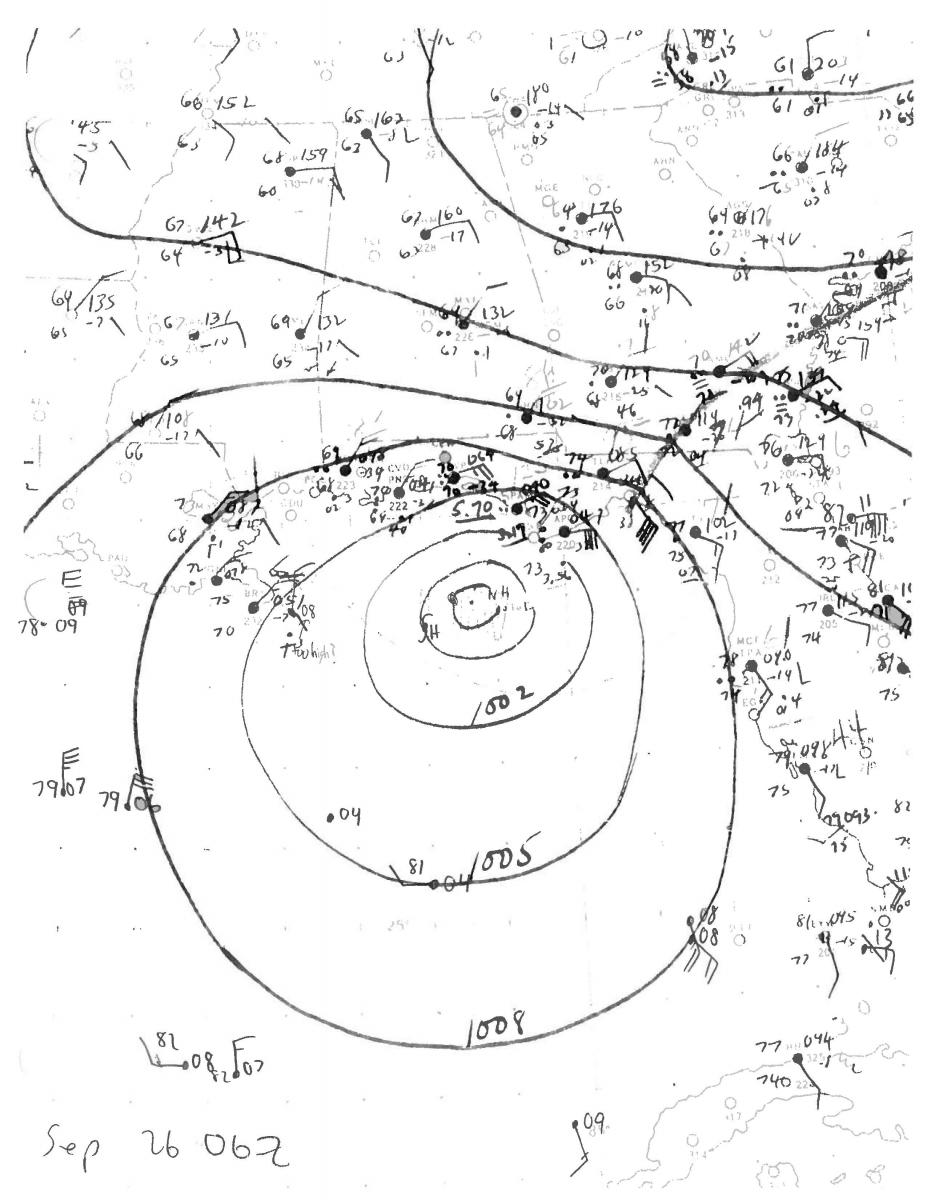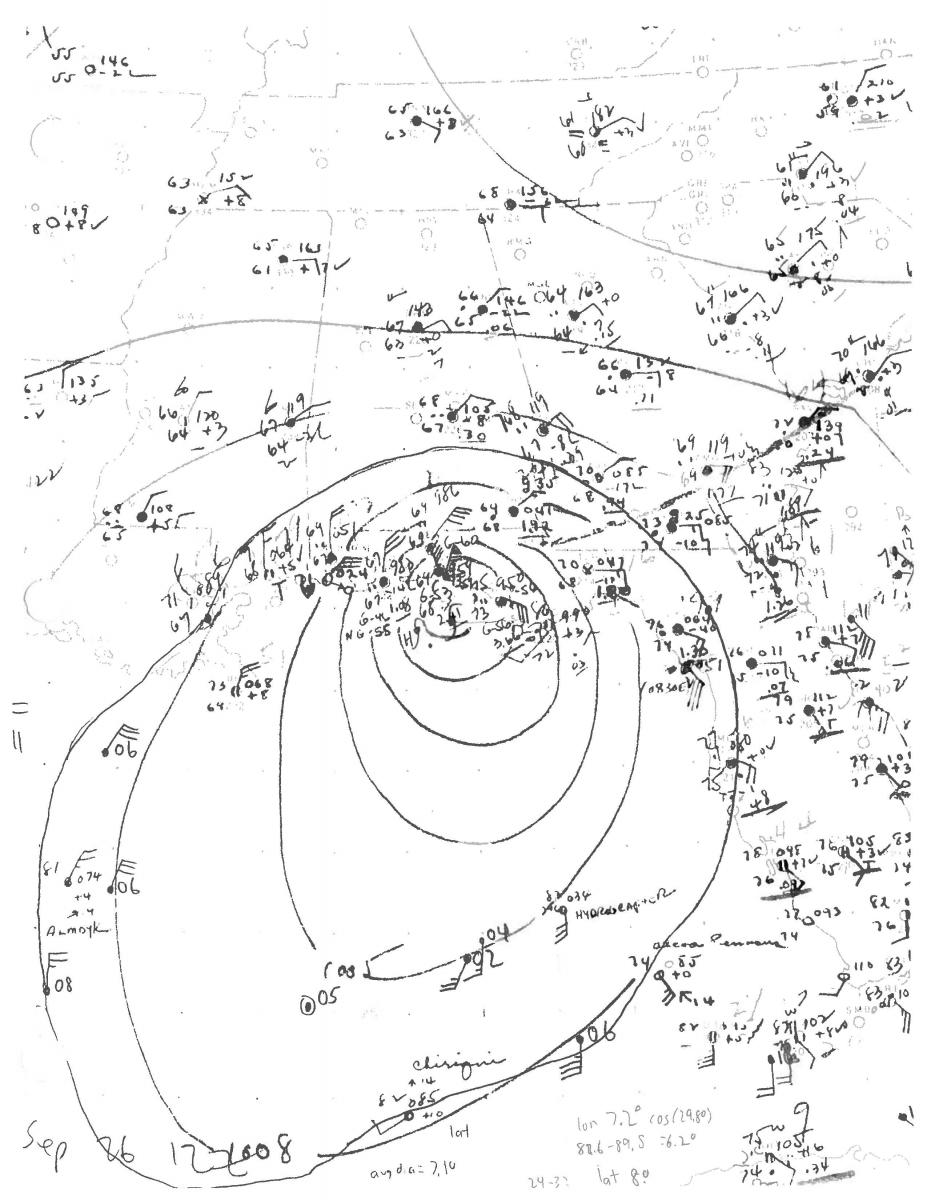
Hurricane Florence - September 26, 1953
 Florence began as a tropical wave that crossed the Caribbean Sea on September 21st back in 1953. The tropical wave became more organized just southeast of Jamaica and quickly gained tropical storm status early on the 23rd.
Florence began as a tropical wave that crossed the Caribbean Sea on September 21st back in 1953. The tropical wave became more organized just southeast of Jamaica and quickly gained tropical storm status early on the 23rd.
Florence continued to quickly gain strength as it moved through the Yucatan Channel and earned hurricane status by the evening of the 24th. By midday on September 25th, Florence had intensified into a major hurricane. Florence did not remain a major hurricane for long as it quickly met cooler air and cool waters in the northern Gulf, which led to slight weakening.
It continued to track north-northeast toward the north-central Gulf Coast through the early morning hours of September 26th. A hand-drawn analysis of Hurricane Florence as it approached the northern Gulf Coast early on the 26th can be viewed on the right (courtesy of NOAA AOML/HRD). Florence made landfall along the Florida panhandle as a Category 1 Hurricane between Fort Walton Beach and Panama City Beach midday on the 26th of September in 1953. Another analysis of Florence close to landfall can be viewed in the graphic on the right at the bottom (courtesy of NOAA AOML/HRD). After making landfall, Florence quickly weakened to a tropical storm and then became extratropical overnight.
 Heavy rainfall associated with Hurricane Florence became the biggest impact across the region. A map depicting the storm total rainfall during Florence can be seen below (courtesy of NOAA WPC). An estimated 7-10 inches with isolated higher amounts occurred across south central Alabama and across Escambia, Santa Rosa, and Okaloosa Counties in northwest Florida.
Heavy rainfall associated with Hurricane Florence became the biggest impact across the region. A map depicting the storm total rainfall during Florence can be seen below (courtesy of NOAA WPC). An estimated 7-10 inches with isolated higher amounts occurred across south central Alabama and across Escambia, Santa Rosa, and Okaloosa Counties in northwest Florida.
Since the portion of the Florida panhandle where Florence made landfall was sparsely populated in 1953, there was no measuring equipment in the vicinity of the landfall location. However, just west of where Florence made landfall, a wind gust of 84mph was measured at Eglin Air Force Base.
A combination of rain and wind resulted in minor crop damage, roof damage, and downed trees and powerlines across south central Alabama and the northwest Florida panhandle.
Additional Information
WPC Archive
Monthly Weather Review - Atlantic Hurricane Season of 1953
NOAA Digital Coast - Hurricane Florence Track
Acknowledgements: Page created by Morgan Barry (forecaster).
LAST UPDATED: September 2022